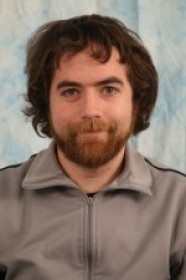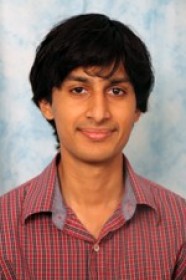Student Talks
Supervised Descent Method
Event Location: GHC 8102Abstract: In this dissertation, we focus on solving NLS problems using a supervised approach. In particular, we developed a Supervised Descent Method (SDM), performed thorough theoretical analysis, and demonstrated its effectiveness on optimizing analytic functions, and four other real-world applications: Inverse Kinematics, Rigid Tracking, Face Alignment (frontal and multi-view), and 3D Object [...]
Visual Utility – A Framework for Focusing Computer Vision Algorithms
Event Location: NSH 3305Abstract: The real world is a rich environment, fraught with complexity. To be robust in this complex environment, computer Vision algorithms that operate in Unstructured Environments (VUE) tend to use large amounts of data or complex modeling. Unfortunately, these algorithms also require significant computational resources. In this thesis, we examine a visual [...]
A Reflex-based Neuromuscular Control Model of Human Locomotion
Event Location: GHC 4405Abstract: The neural controls of human and animal locomotion have been studied over centuries. However, much of our knowledge about the locomotion control of complex species, especially humans, still relies on extrapolating from what is known in simpler animals. One barrier for better understanding the control of human locomotion is that we [...]
Moment-based Algorithms for Structured Prediction
Event Location: GHC 4405Abstract: Latent variable models constitute a compact representation for complex, high dimensional data. This is useful in many applications in Robotics and Natural Language Processing (NLP). Latent models are however very hard to learn, in part because of the non-convexity of the likelihood function. The main difficult is associated with estimating the [...]
Reasoning About Spatial Patterns of Human Behavior During Group Conversations with Robots
Event Location: NSH 3305Abstract: Human conversations are a type of jointly focused encounter in which the participants gather together and openly cooperate to sustain a single focus of attention. When the participants are standing, their cooperation can be observed in their spatial organization. People position and orient themselves to maximize their opportunity to monitor one [...]
Low-Cost Fine Particulate Monitors and their Applications
Event Location: NSH 3305Abstract: Air quality has long been a major health concern for citizens around the world, and increased levels of exposure to fine particulate matter (PM2.5) has been definitively linked to serious health effects such as cardiovascular disease, respiratory illness, and increased mortality. PM2.5 is one of six attainment criteria pollutants used by [...]
Active Illumination for the Real World
Event Location: GHC 4405Abstract: Active illumination systems use a controllable light source and a light sensor to measure properties of a scene. For such a system to work reliably it must be able to handle the effects of global light transport, bright ambient light, defocus and scene motion. The goal of this thesis is to [...]
Organ-Mounted Robots for Minimally Invasive Beating-Heart Surgery
Event Location: NSH 1507Abstract: In the push to improve patient outcomes in cardiac interventions, minimally invasive beating-heart surgery is a major field of surgical research. However, interventions on a soft tissue organ under continuous motion through remote incisions pose a significant challenge. Endoscopic approaches eliminate the associated morbidity of median sternotomy, but they require either [...]
Planning for a Small Team of Heterogeneous Robots: from Collaborative Exploration to Collaborative Localization
Event Location: GHC 8102Abstract: Robots have become increasingly adept at performing a wide variety of tasks in the world. However, many of these tasks can benefit tremendously from having more than a single robot simultaneously working on the problem. Multiple robots can aid in a search and rescue mission each scouting a subsection of the [...]
The theory and implementation of spring mass running on ATRIAS, a bipedal robot
Event Location: GHC 8102Abstract: We expect legged robots to be highly mobile. Human walking and running can execute quick changes in speed and direction, even on non-flat ground. Indeed, analysis of simplified models shows that these quantities can be tightly controlled by adjusting the leg placement between steps and that the leg placement can also [...]









